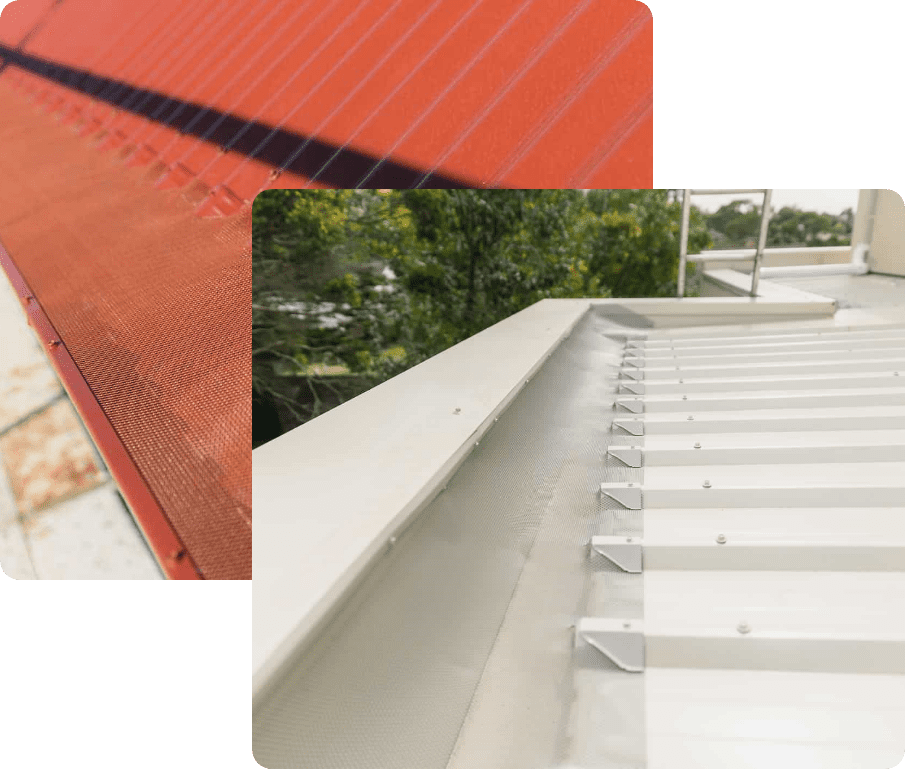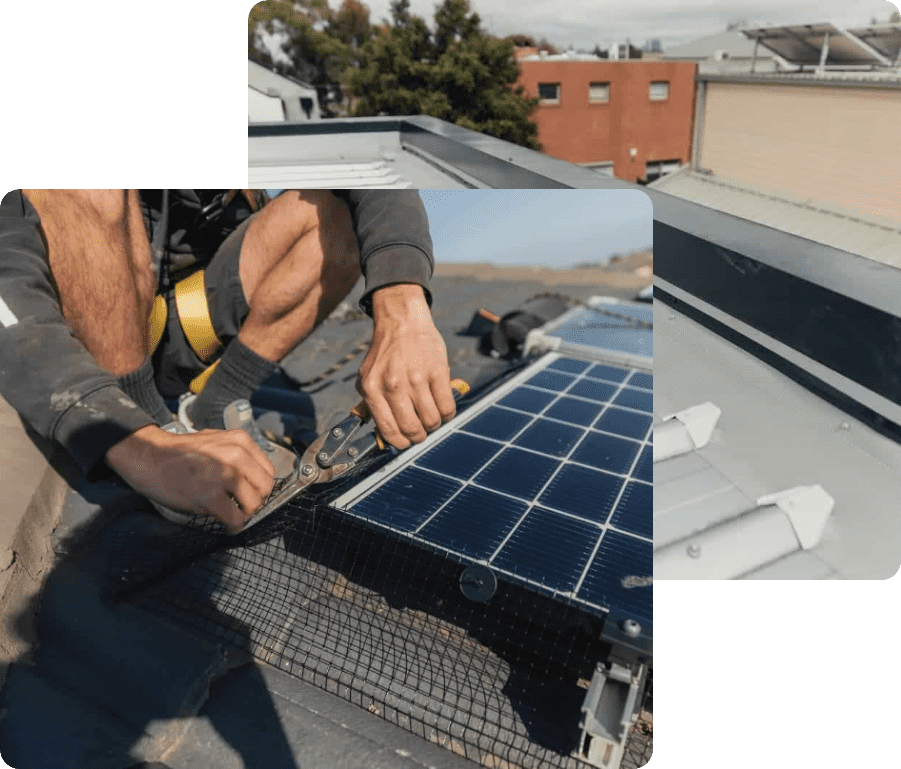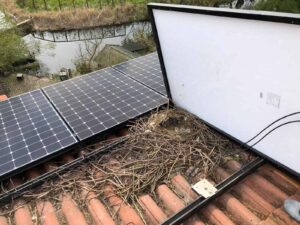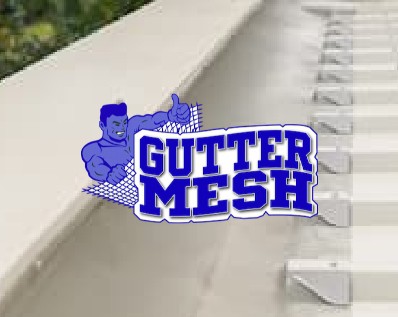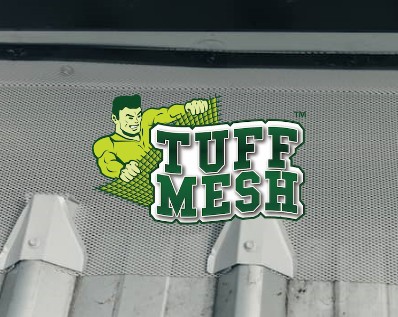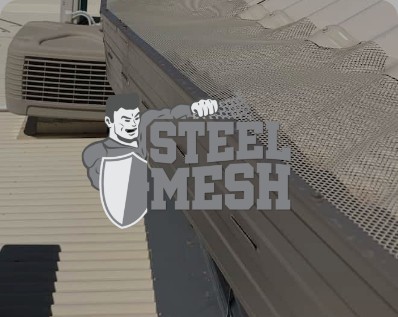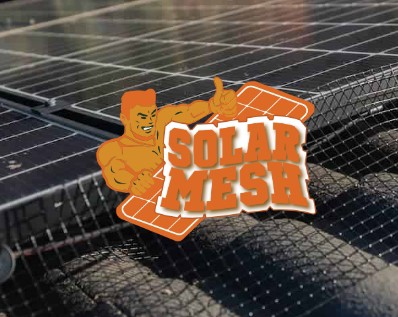Typically, gutter guards work to keep leaves and debris buildup out of your guttering system, allowing the optimal flow of rainwater away from your home—but they are also widely used for bushfire protection, bird proofing, rainwater harvesting, and commercial applications.
There are many different types of gutter guards. The best gutter guard for your home will depend on gutter guard’s intended purpose, location, climate, budget and installation expectations.
Here is a list of the types of gutter guards available in Australia:
- Integrated mesh system
- Ember guard system
- Commercial-grade mesh system
- Valley mesh system
- Mesh panels
- Vinyl gutter guards
- brush gutter guards
- Foam inserts
- solar panel mesh
When choosing a gutter guard, homeowners and tradespeople should consider material, colour, aesthetics, environment, and location.
Continue reading for a comprehensive look at the best gutter guards in Australia and the considerations that help you choose the types of gutter guards for your project.
Need gutter guard installed?
Best Gutter Guard Quick Guide
- Easiest to install: Brush Gutter Guards
- Best for bird proofing: Integrated mesh (Commercial Grade)
- Best for bushfire protection: Integrated Mesh Ember Guard
- Best for leaf proofing: Integrated Mesh
- Best for box gutters: integrated mesh (Commercial Grade)
- Cheapest: Mesh Panels
- Best looking: Vinyl guards
Best gutter guard types
There are several types of gutter guards common in Australia. Some categorise gutter guard products into DIY-friendly vs professionally installed gutter guards.
However, most gutter guards are DIY-friendly, some more than others. Therefore, we tend to categorise gutter guards by how they attach to the roof and gutters, such as:
- Gutter guards that act as gutter covers sitting above the gutter and roof
- Gutter guards that sit inside the gutters
Below is a list of the best Australian gutter guard types in detail:
Integrated Mesh System
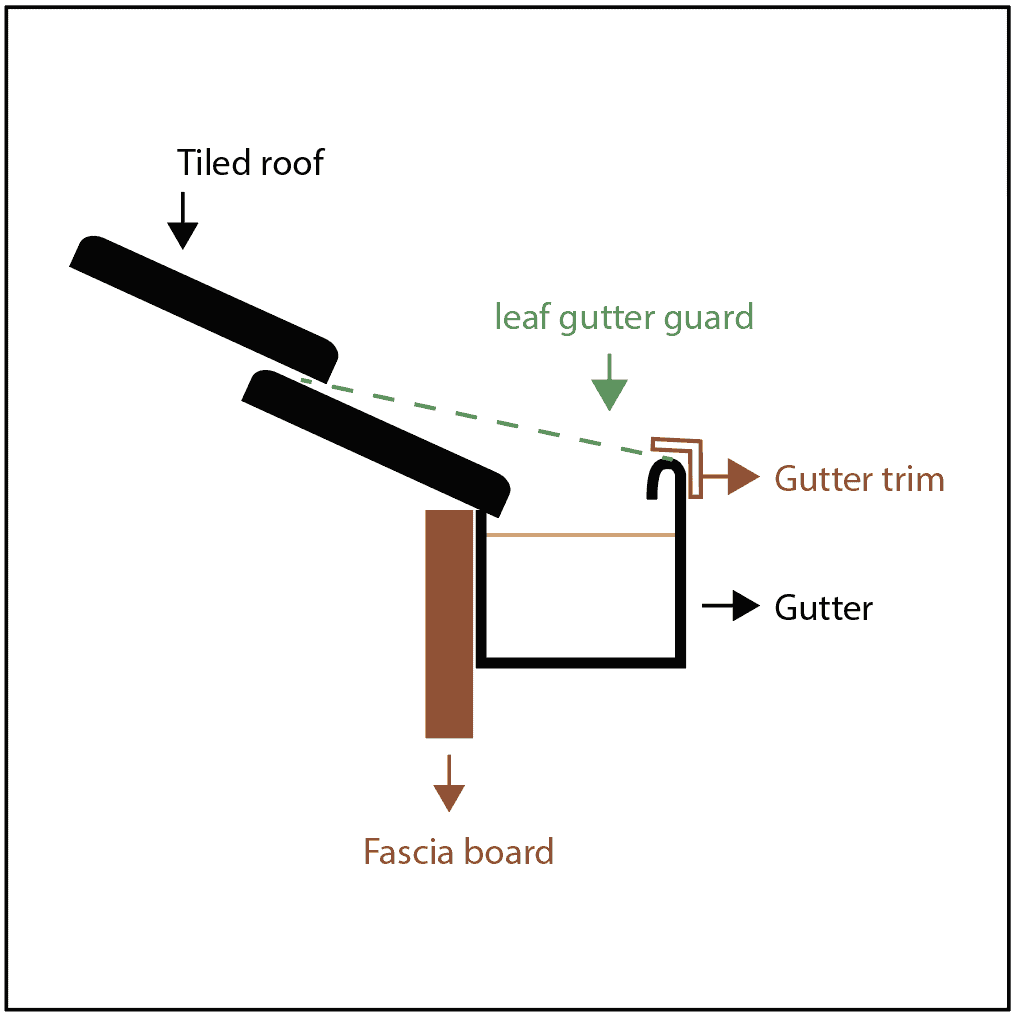
An integrated mesh system is a comprehensive, permanent gutter guard product. The integrated mesh system, often known as leaf guard, includes a micro-mesh and fixtures – trims and saddles (for metal roofs) – that protect the gutters, valleys and other roof cavities or spaces.
The system incorporates a micro-mesh fixed permanently to the outer edge of the gutter lip and roof, creating a slope that encourages leaf and debris to slide to the ground.
The integrated mesh system is a more expensive gutter guard product. However, it is the most durable, robust, sustainable gutter protection system.
While it is a DIY gutter product, installing gutter mesh systems is typically completed by installers.
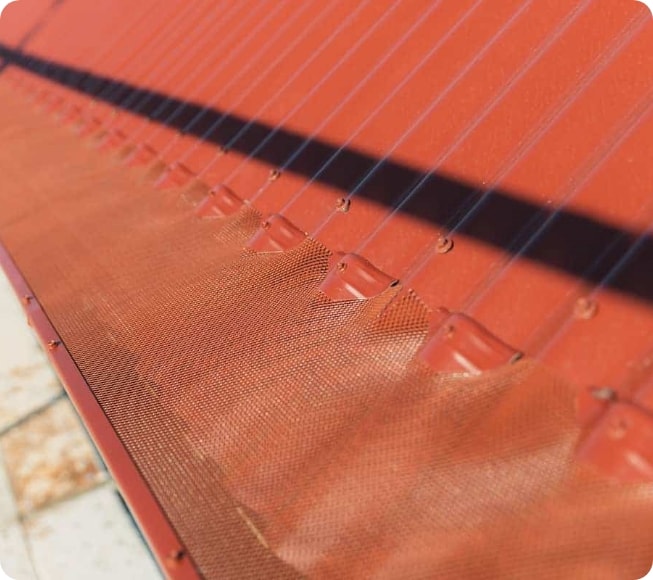
Below are the pros and cons of an integrated mesh system:
Pros
- Up to 25-year warranty
- Durable, long-lasting
- DIY options available
- Available for different roof types
- Various material options
- Colour-match available
- Range of hole sizes, including pine needles
- AS4020 products available
- 100% bird proofing solution
- Ember guard products are available
- Fire-rated products
- Protect roof valleys
- Protects box gutters or parapets
cons
- Expensive
- Difficult to Clean
- Easy to install and maintain
- More challenging DIY install
Need gutter guards installed
Ember Guard System
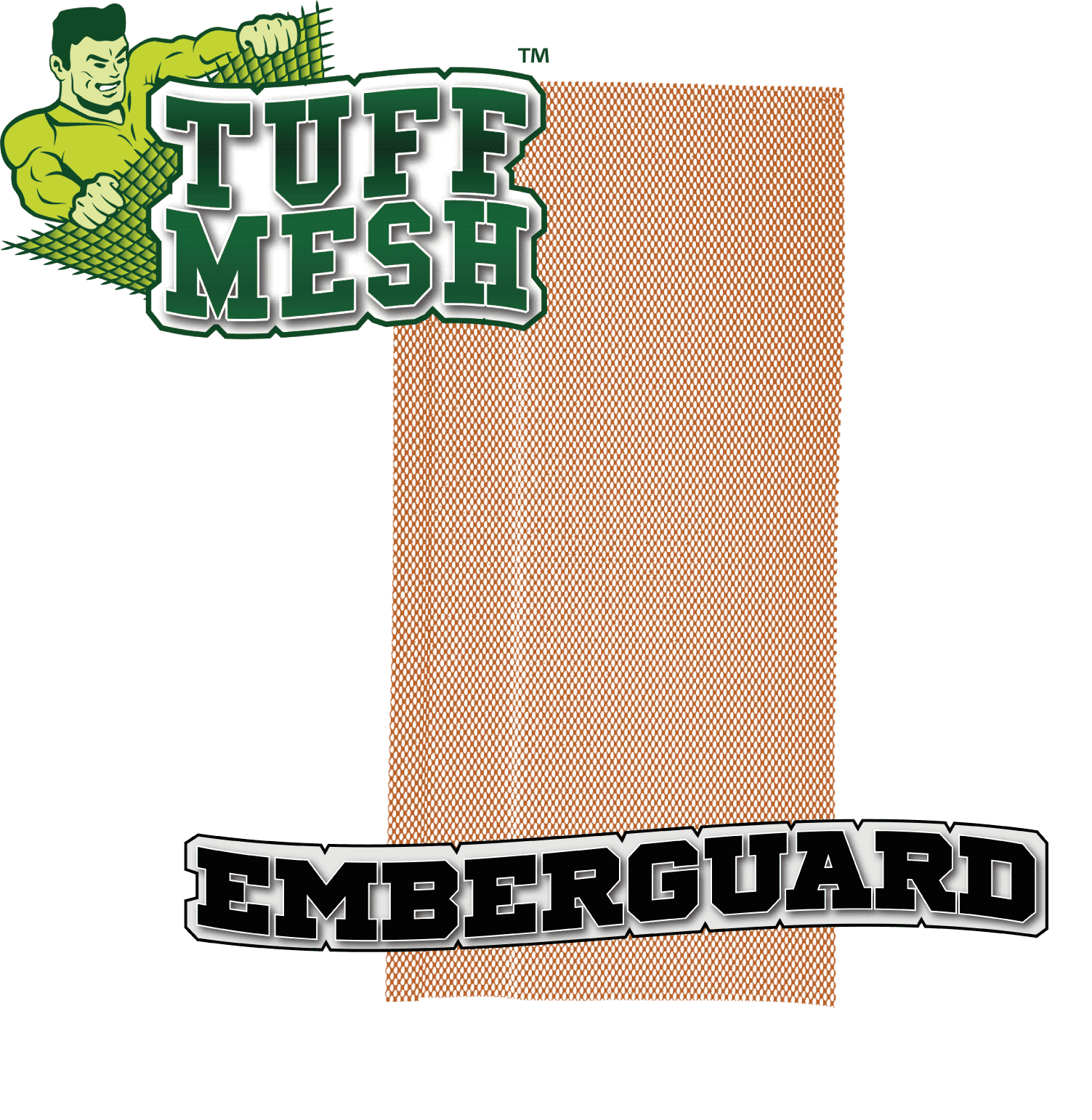
Ember guards are custom gutter mesh products that comply with bushfire protection measures. The critical difference between an ember guard and other mesh gutter guard options is that the hole size is less than 2mm wide. The 2mm hole size prevents embers from entering and igniting leaf litter that settles in your gutter system.
For an ember guard to comply, it must be metal. Aluminium ember guards comply with BAL-29 standards and below, while steel and bronze ember guards comply with BAL-40, and BAL-FZ rated properties.
People also use ember guard on homes surrounded by pine needles, jacarandas and other flora with tiny litter as the fine mesh prevents debris buildup.
Valley mesh system
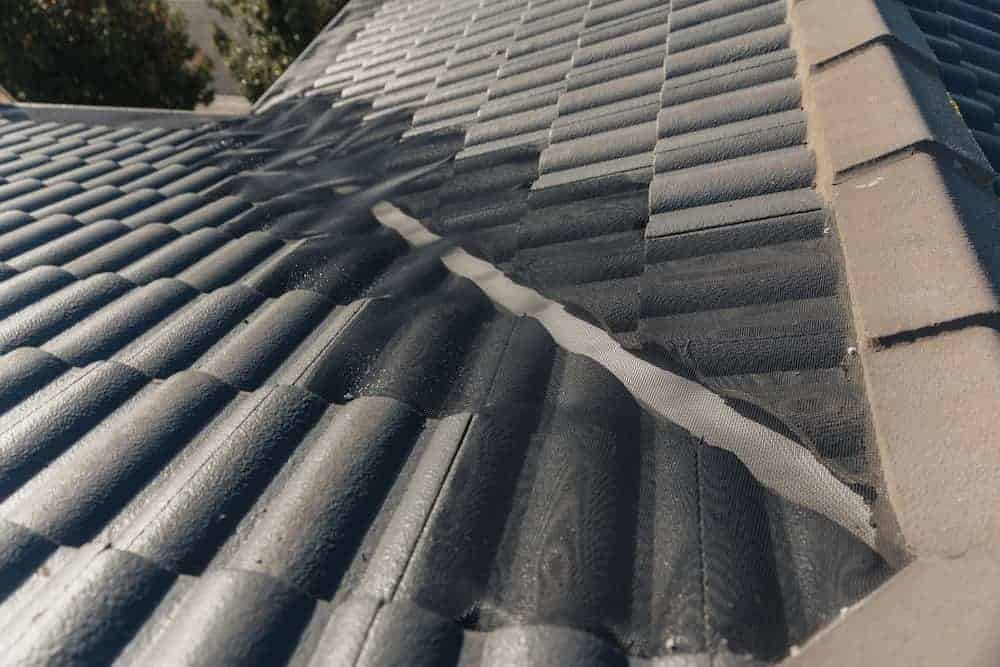
A valley mesh system is another integrated mesh system that protects the roof valleys.
Roof valleys require a wider mesh to span. Installers secure the mesh using corrugated, Trimdek® or Klip-lok®-style saddles on metal roofs. The mesh is tucked under the tiles and sealed with silicone for tiled roof installation.
Want to become a gutter guard installation partner?
Mesh panels
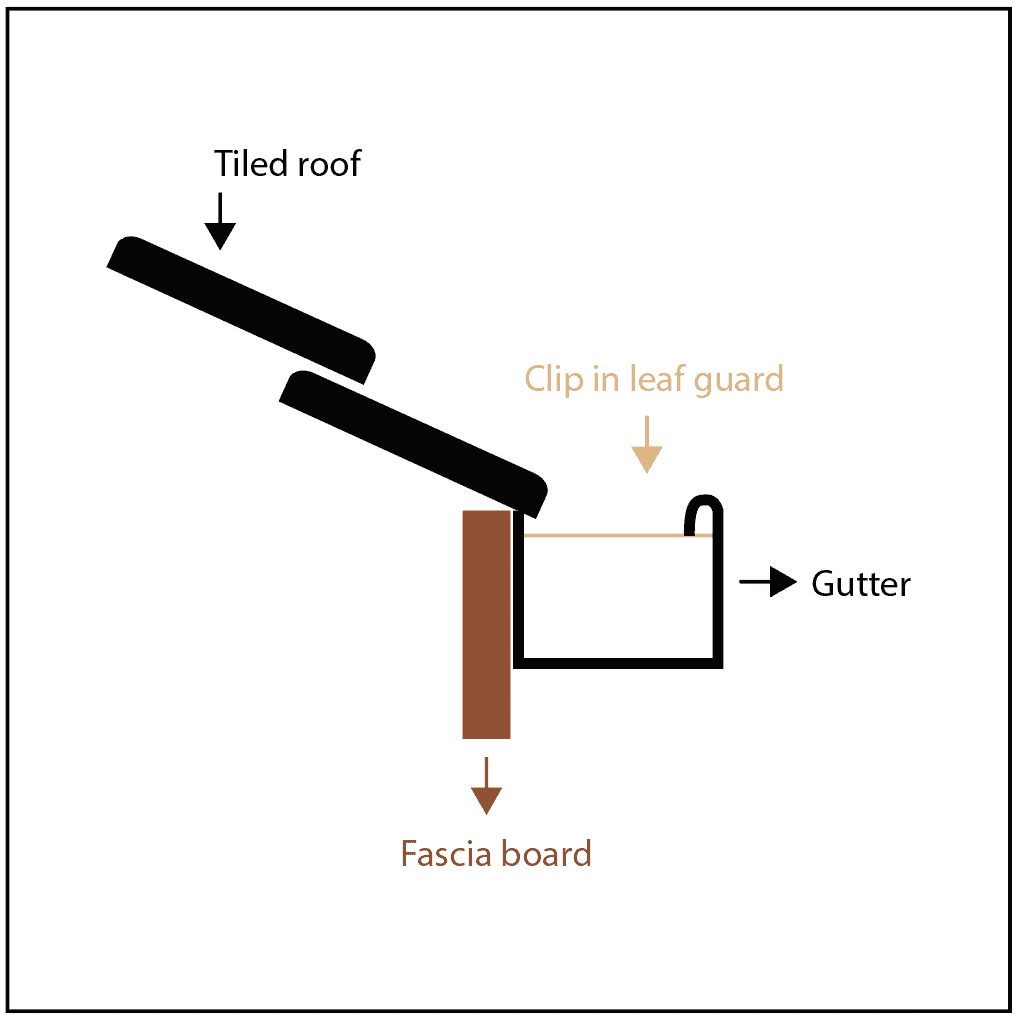
There are many different types of mesh panels on the market in plastic, stainless steel or aluminium. The most common are micro mesh guards and screen gutter guard systems.
Some mesh panels attach directly to the inner or outer gutter lip resting on the metal roof or under the first or second row of a tiled roof. Other types of mesh panels clip inside the gutters.
The mesh gutter guard range in hole sizes that allow water to flow directly through the mesh and into the rain gutter beneath. Depending on the hole size.
There are two significant concerns for mesh panels:
- Panels create a flat surface leading to buildups on the gutter guards installed.
- Extreme weather conditions and strong winds can cause the panels to dislodge and become airborne.
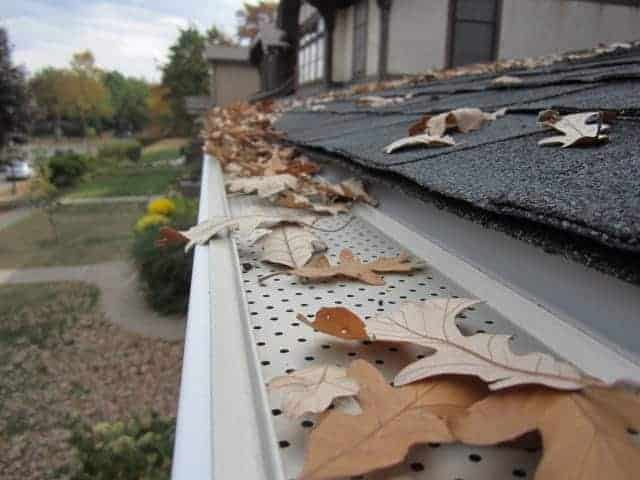
Below are the pros and cons of mesh panels:
Pros
- 5-15 year warranties
- DIY options available
- Many installation options
- Different material options
- Effective leaf proofing measures
- Aesthetically-pleasing
- Some fire-rated products
- Some bird proofing options
- Some colour matches are available
- Available in various materials
cons
- Expensive
- Difficult to Clean
- Easy to install and maintain
- Leaves can accumulate on top and build up over time
- Some hole sizes will not prevent finer debris like pine needles
- Not suitable for water tanks – unless specified
- Not ideal for areas with extreme weather or high winds
- No 100% bird proofing solution
- It does not protect roof valleys
- It does not protect box gutters or parapets
Vinyl Guards
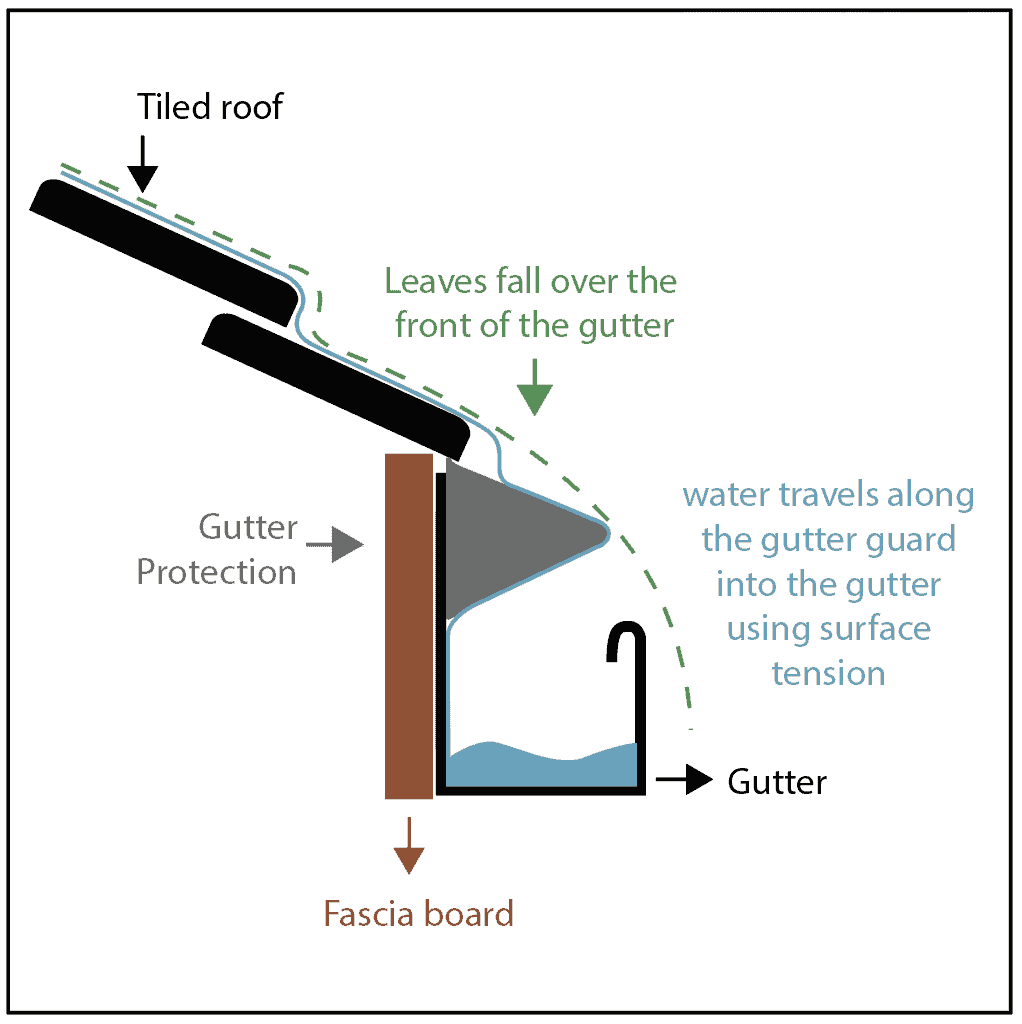
Vinyl guards, also known as downward curve or reverse curve gutter guards, attach to the roof, making a speedy and easy installation process for professionals. Like the mesh, the panels prevent debris from entering the gutter while allowing water to flow freely.
Although they are another cost-effective solution, vinyl guards can clog easily; clear out built-up debris. It is also not suitable for bushfire protection.
Correct installation is essential for the successful application of the gutter guard. To ensure the vinyl guards’ effectiveness, the slope must be set precisely to the roof’s angles.
Below are the pros and cons of vinyl guards:
Pros
- 10-15 year warranty
- Very effective leaf proofing measure
- aesthetically-pleasing
- Some colour matches are available
- Available in various materials
cons
- Expensive
- Difficult to Clean
- Requires professional installation and maintenance
- Not suitable for bird proofing
- Not AS4020 rated – not suitable for rainwater harvesting
- Not ideal for bushfire protection
- It does not protect roof valleys
- It does not protect box gutters or parapets
Need gutter guard installed?
Brush gutter guards
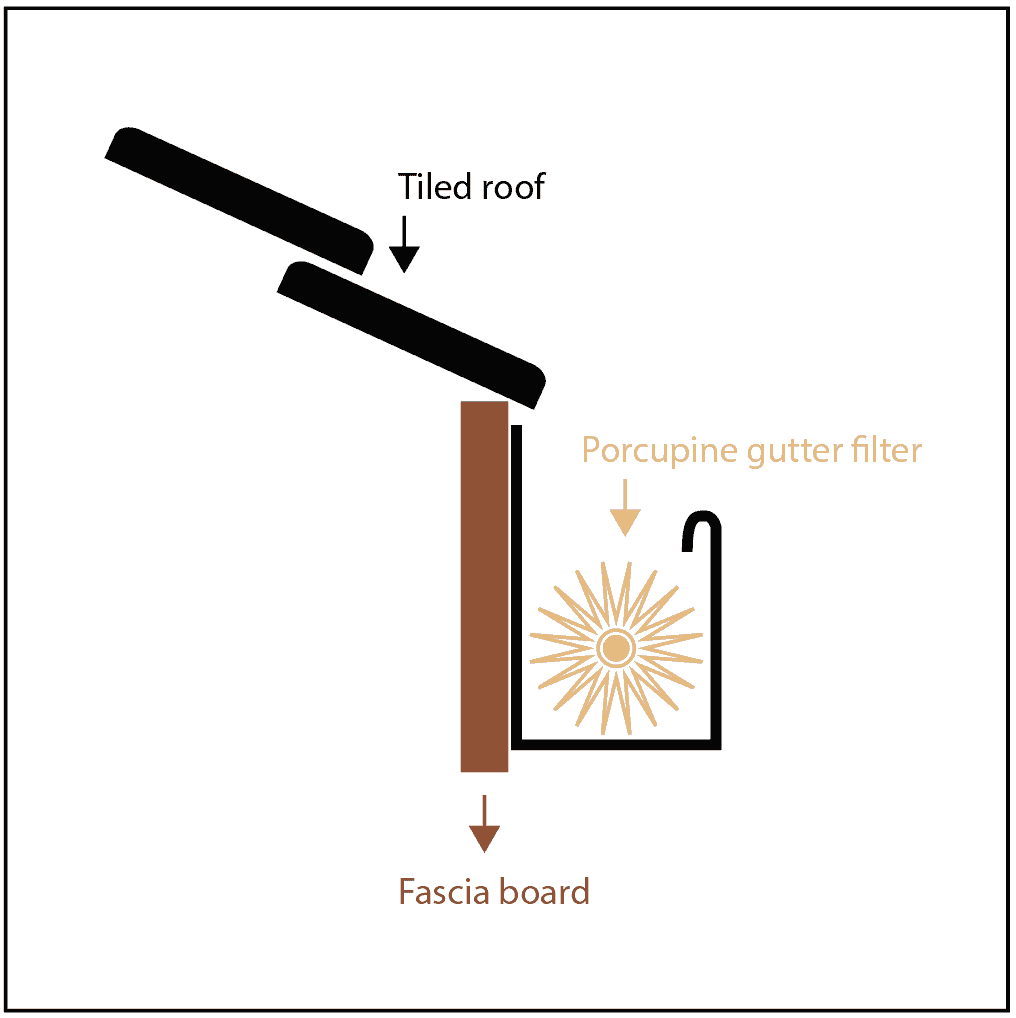
A brush gutter guard sits inside the existing gutters. It is a plastic gutter guard with black polypropylene bristles extending outwards from the thick metal wire core. Leaves and debris get caught in the bristles, while the rainwater flows through the gutters freely.
Brush-style gutter guards are relatively cheap and very easy to install as they only need to be inserted into the gutters. They are readily available from stores like Mitre10 and Bunnings in 10-metres or 1-metre.
Although inserted into the gutters, leaves and twigs stuck in the bristles are often visible from the ground. It also requires more regular cleaning than screen guards and is unsuitable for bushfire protection, bird proofing and rainwater harvesting.
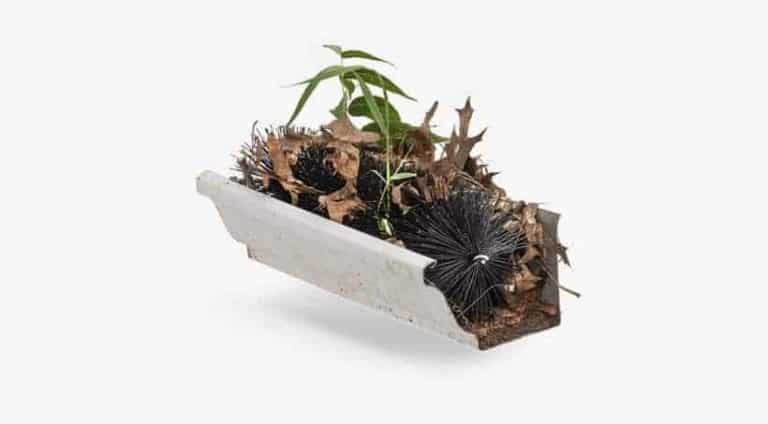
Below are the pros and cons of brush gutter guards:
Pros
- Inexpensive
- Last 6-12 months but will require regular cleaning
- Easy to install and remove
- DIY-friendly
- Fire Retardant and UV Stabilised
- Invisible from the ground
Cons
- Can clog
- Difficult to Clean
- Requires maintenance to be effective
- Can attract pests and insects
- Not suitable for bird proofing
- Not AS4020 rated – not suitable around
- Not ideal for bushfire protection
- It does not protect roof valleys
- It does not protect box gutters or parapets
Foam gutter guards
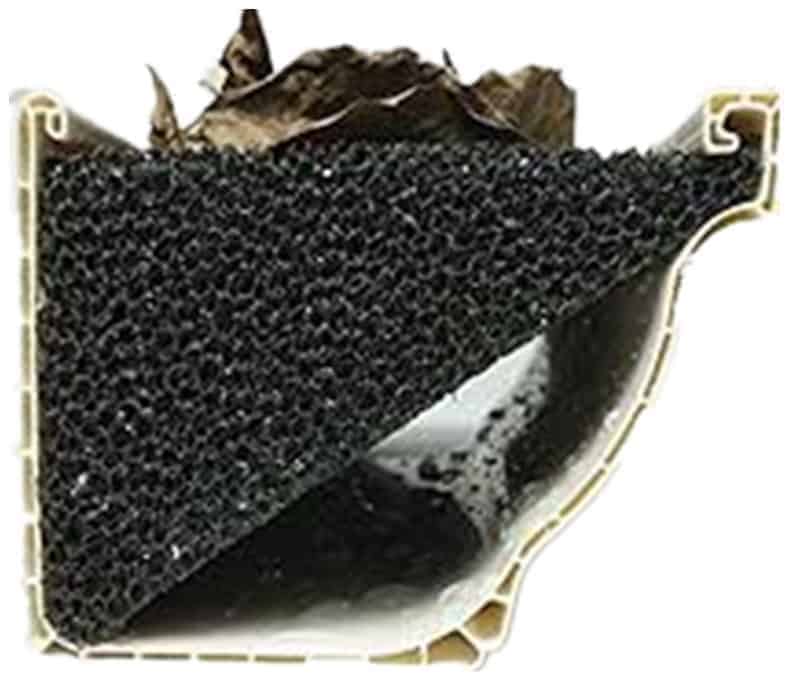
A foam gutter guard, also known as foam inserts, is another guard inserted into the gutter. It resembles a pool noodle and is popular for homeowners who want an easy DIY-friendly gutter guard install.
The insert sits inside the existing gutter system and is water permeable, separating the leaves and debris above. The foam barrier is straightforward to install gutter guards because they fit the size of a standard gutter.
Some downsides include the foam guard attracting mould and plant growth if not regularly changed. So, you will need to clean them and replace them periodically. The foam insert’s shape is flat, so the debris will build up on the top of the guard and become visible from the ground. Lastly, it is also a fire risk and should not be used in areas prone to bushfire alerts.

Below are the pros and cons of foam gutter guards
Pros
- Inexpensive
- Last 6-12months but will require regular cleaning
- Easy to install and remove
- DIY-friendly
- Fire Retardant and UV Stabilised
- Invisible from the ground
Cons
- Can trap water
- Can Trap Roof Oil
- Difficult to Clean
- Requires maintenance to be effective
- Can grow mould
- Can attract pests and insects
- Not suitable for bird proofing
- Not AS4020 rated – not suitable around
- Not ideal for bushfire protection
- It does not protect roof valleys
- It does not protect box gutters or parapets
Solar Mesh
While SolarMesh is not a traditional gutter guard product, it is a necessary addition to gutter protection and bird proofing. The solar mesh protects solar panels from birds, leaves and debris collecting underneath the panels.
Solar mesh has a larger hole that ensures unrestricted airflow and sunlight, so the panels don’t overheat, reducing energy output.
The solar mesh also attaches with clips, unlike the fixtures for gutter covers, gutter screens and gutter guards. These clips avoid compromising the solar panels and voiding the warranty.
Want to become a gutter guard installation partner?
Gutter guard solution
The best gutter guards offer more than one gutter guard solution, including;
- leaf proofing
- bird proofing
- bushfire protection against ember attack
- rainwater harvesting
- solar panel protection
- reduce gutter cleaning
- reduce maintenance
- preventing water damage
- increase safety
- increase the lifespan of your roof and gutter system
Leaf proofing
A leaf guard or gutter guard prevents blocked gutters and other debris buildups from guttering systems. It significantly reduces gutter cleaning and maintenance.
It is often installed to increase leaf guards to protect the gutter systems from heavy downpours and debris buildup for a more extended gutter and downpipe lifespan.
Reduce gutter cleaning, maintenance & damage
Gutter guards prevent debris and leaves from entering the guttering system. Clogged gutters are a maintenance concern for businesses and homeowners, and regular cleaning is every 6-12 months, depending on the area you live.
It also improves safety for maintenance teams and residents, keeping people on the ground instead of working at heights to clean blocked gutters.
Areas prone to heavy rainfall and extreme weather conditions are also at risk of water damage, including structural damage.

Bushfire protection against ember attack
An ember guard is the most effective bushfire protection against ember attacks from airborne burning embers igniting litter in unprotected gutters. Gutter protection is the only measure to protect your home from burning embers.
An ember guard is tested and certified as an Australian fire-rated guard with BAL ratings and Fire Rating Flame Index “0” for bushfire-prone areas.
Need gutter guard installed?
Bird proofing
Another common reason for gutter guard is bird proofing. Brush and foam gutter guards are unsuitable for bird proofing as birds and vermin can easily remove them from the gutters.
Integrated mesh gutter guards prevent birds from gaining access to the roof and nesting in the gutters and valleys. It also encourages healthy water flow.
The mesh material surface is specially-manufactured to deter bird nesting and perching. When applied with other bird prevention methods such as spikes and solar panel protection, it can provide 100% complete bird protection. Installers can only offer a 100% bird proofing guarantee if all possible entry points are covered with mesh.
It is impossible to vermin-proof your home with the gutter guard as other entry points are available through the foundations and walls. However, preventing overflowing gutters reduces the risk of vermin and pests nesting in your gutters and roof.
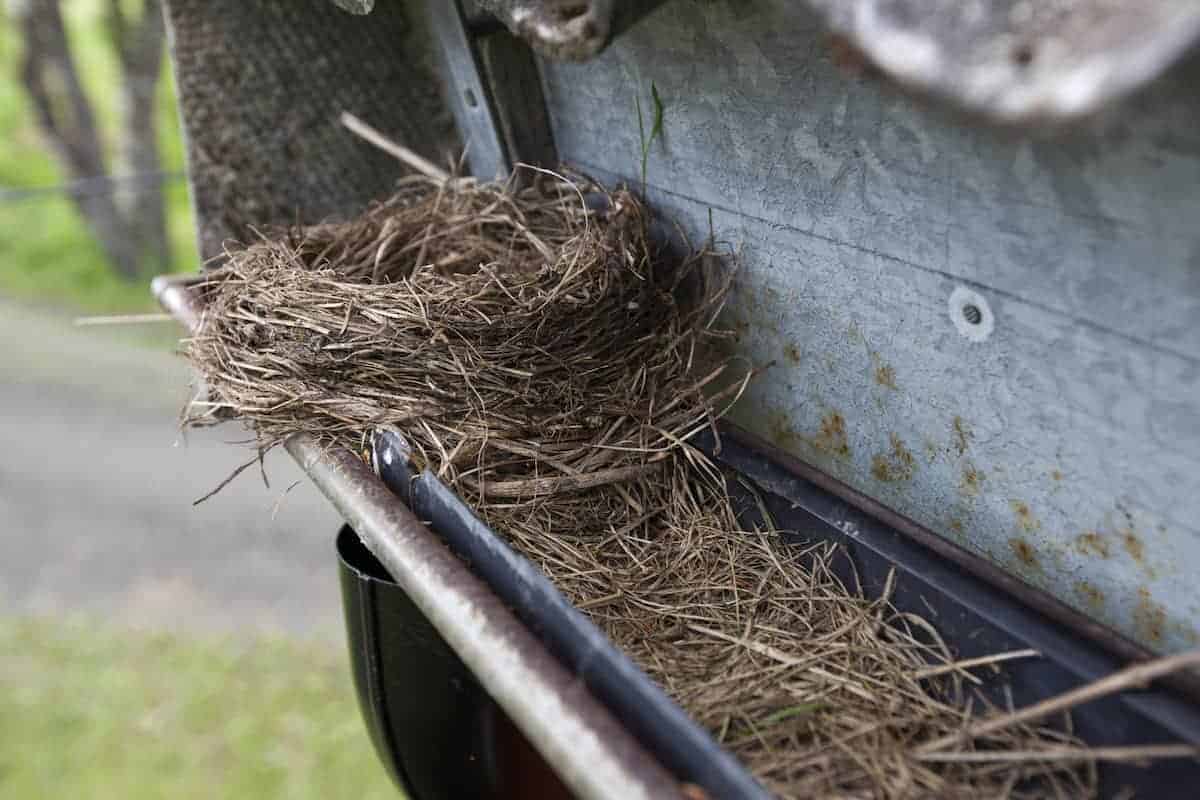
Rainwater harvesting
Gutter guards protect rainwater harvesting systems from contaminants and are a complete system’s first component. Any gutter guard with a water tank for home or drinking water must comply with AS4020 water standards. Plastic gutter guards do not meet these standards, but not all metal gutter guards will.
Always ask for Australian water standard certificates if using your gutter guard to filter tank water used in the home.
Commercial gutter guard
Commercial installation differs from a residential installation with roof types and gutter profiles. The installer attaches gutter protection with a ski slope angle to the gutter front lip or roof side, creating a permeable protective barrier to the other roof. The process is similar to residential installation.
The difference is most commercial projects require a commercial-grade guard, including using a combination of bracing and fixing options. This is due to the more significant gaps and gutter systems on commercial properties vs residential buildings.
Solar panel protection
Solar panel protection is an additional roof and gutter protection measure as part of a leaf and bird proofing solution. The solar mesh protects solar panels from birds, leaves and debris collecting underneath the panels. It is also suitable for bushfire-prone areas as it prevents buildup underneath.
Solar mesh has a larger hole that ensures unrestricted airflow and sunlight, so the panels don’t overheat, reducing energy output.
The solar mesh also attaches with clips, unlike the fixtures for gutter covers, gutter screens and gutter guards. These clips avoid compromising the solar panels and voiding the warranty.
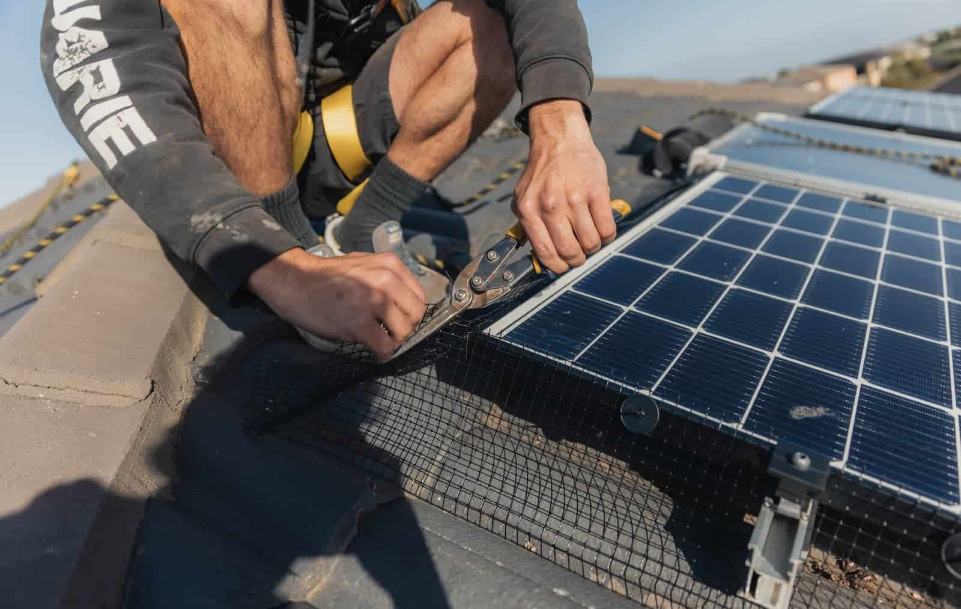
Need gutter guard installed?
Gutter guard materials
There are several types of gutter guard materials, including:
- plastic
- aluminium
- Colorbond® steel
- Stainless steel
- galvanised steel
- bronze
- copper
The type of gutter guard material you need will depend on various factors.
Plastic gutter guards
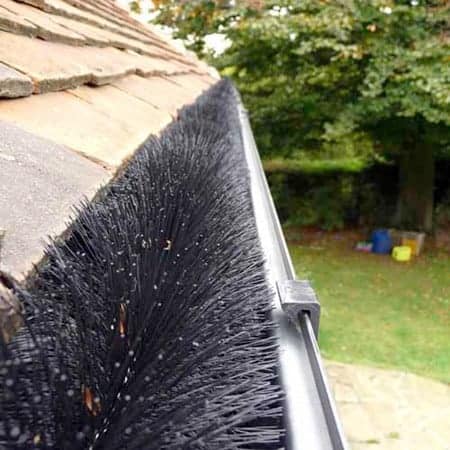
- Plastic gutter guards are common in DIY – especially foam and brush. However, they are not the best solution for anything other than keeping clean gutters. These types of gutter guards will need regular cleaning.
- Plastic gutter mesh is also commonly used in coastal applications where metal gutter guards corrode more quickly due to the high salt concentration. It is also used on galvanised roof types to prevent reactions between the mesh and roof material.
Aluminium gutter guards
- Aluminium gutter guards are the most popular metal for gutter guard protection due to their ability to span and fit the roof profile. Aluminium mesh is Colorbond® powder-coated to increase strength and durability and to retain its colour for longer.
Steel gutter guards
- Colorbond® powder coated steel is the most common steel type used in the gutter mesh. The powder-coating provides added protection and retains its colour for longer. Steel mesh is also used for BAL-40 and FZ-rated properties.
- Stainless steel gutter guard is not the most durable gutter guard type and will have a shorter lifespan compared to other steel and aluminium products. Stainless steel mesh corrodes more quickly in regular weather conditions. It is also unsuitable for heavy rain areas or where large debris overhangs the roof.
- Galvanised steel gutter guards products on galvanised roofs, where stainless steel and aluminium roofs will react and corrode more quickly with the metal.
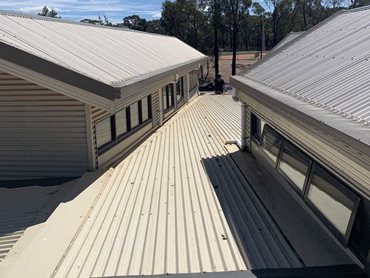
Bronze gutter guards
- Bronze, like steel, is used to comply in BAL FZ-rated bushfire areas. Bronze ember guards require professional installation and are generally more expensive than steel ember guards.
Copper gutter guards
- Copper gutter guards are rare and expensive. Copper screen gutter guards are custom-made for copper gutters, also more unusual in Australia but more common in American gutter protection.
Need gutter guard installed?
Roof types
Tiled roof
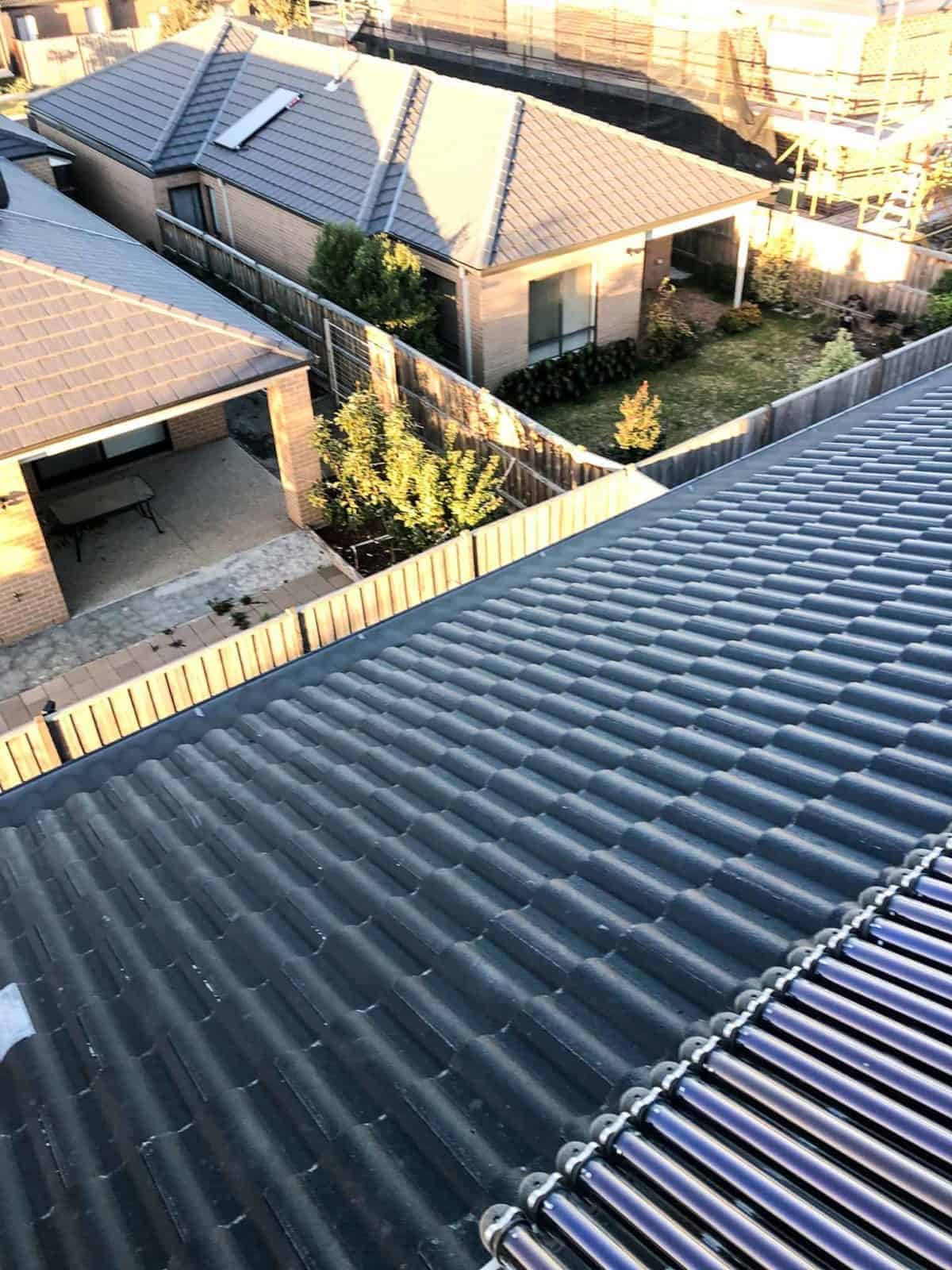
There are many tiled roofs; some make gutter guard installation more challenging than others, such as Spanish tile. The integrated mesh system is the best gutter guard that seals to the tiles and does not void tiled roof warranties.
However, we always advise that you get advice from a professional before installing gutter guards on a tiled roof.
Installers secure the mesh to the gutter edge with a colour-matched trim and typically under the second tile of roofs. Silicone seals the mesh to the tile preventing moisture and air from penetrating the roof.
Trimdek® roof
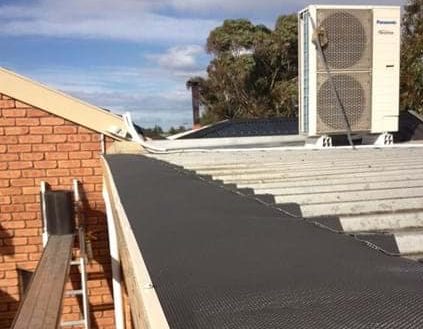
Most gutter guard products are suitable for use with trimdek®. A trimdek® gutter guard will also suit a Spandek® roof profile.
Installers secure the gutter mesh to the trimdek® or spandek® roof using trim and trimdek® saddles and screws in Colorbond® colours.
Corrugated roof
Most gutter guard products are suitable for use with flat roofs.
Installers secure the gutter mesh to a corrugated roof using trim and corrugated saddles and screws in Colorbond® colours.
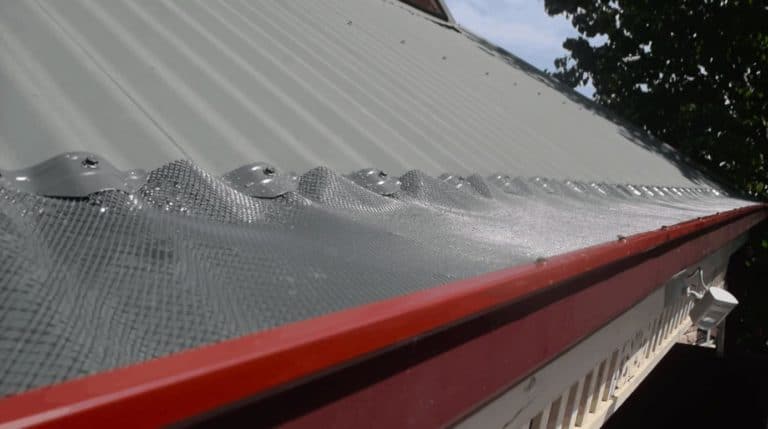
Klip-lok® roof
Most gutter guard products are suitable for use with Klip-lok® roofs and suit Lysaght®, Fielders KingKlip®, Metroll Metlok®, Revolution Revklip and Stramit Speed Deck Ultra®.
Installers secure the gutter mesh to a corrugated roof using trim and Klip-lok® saddles and screws in Colorbond® colours.
At ScreenTech, we use our Super-dek® clip with dibble ribbing to ensure maximum strength.
Flat roof
Most gutter guard products are suitable for use with flat roofs.
Saddles, brackets, or screws secure the mesh against the flat roof profile to ensure no leaves can get into the guttering.
Valleys
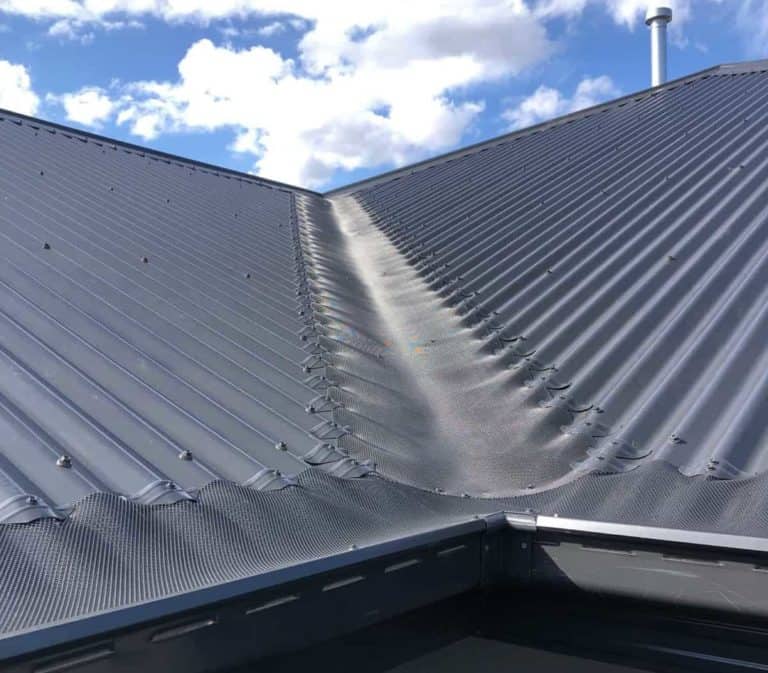
An integrated gutter mesh system is the only gutter guard that protects the valleys and the gutters. Roof valleys require a wider mesh to span. Installers secure the mesh using corrugated, trimdek® or Klip-lok®-style saddles on metal roofs or tuck the mesh under the tiles, sealing with silicone.
Other fixture types
Other gutter guard fixture types include:
- Roof-to-roof
- Roof-to-gutter
- Roof-to rainhead
- Roof-to-commercial roof
- Roof-to-box gutter
- Wall-to-box gutter
An integrated mesh system is the only gutter guard system able to span across all these fixture points and will require professional installation. ScreenTech pioneered bracing and installation techniques for all these fixture types. Speak to us if your project contains any of the following fixtures.
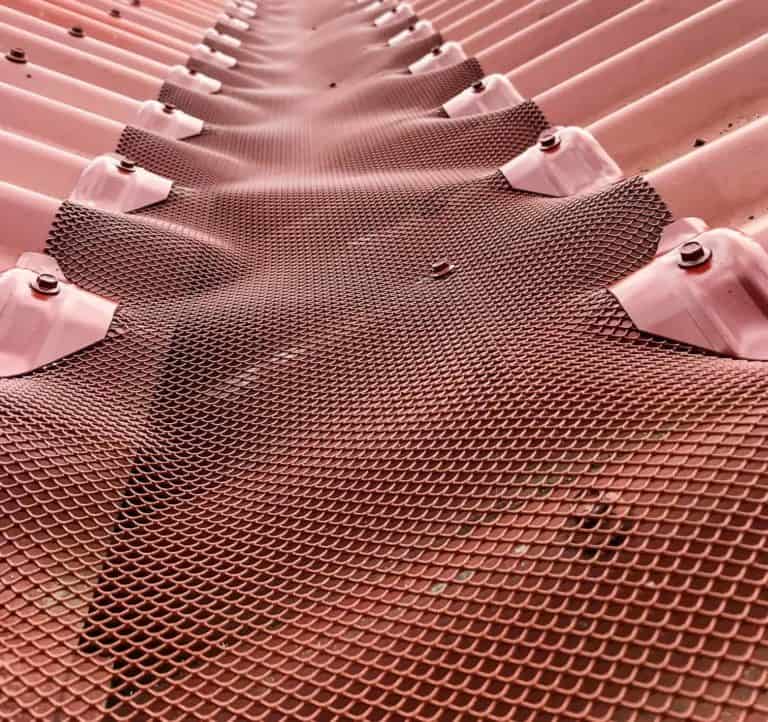
Gutter profiles
Standard guttering
Most gutter guards are suitable for use with standard gutter profiles. For a more comprehensive gutter system protection, consider an integrated mesh system.
Typical gutter widths are five and six inches. However, seven-inch gutters are found in tropical areas that receive a lot of rain. Measure your gutters to ensure that the guard you buy will fit properly.
Box gutters
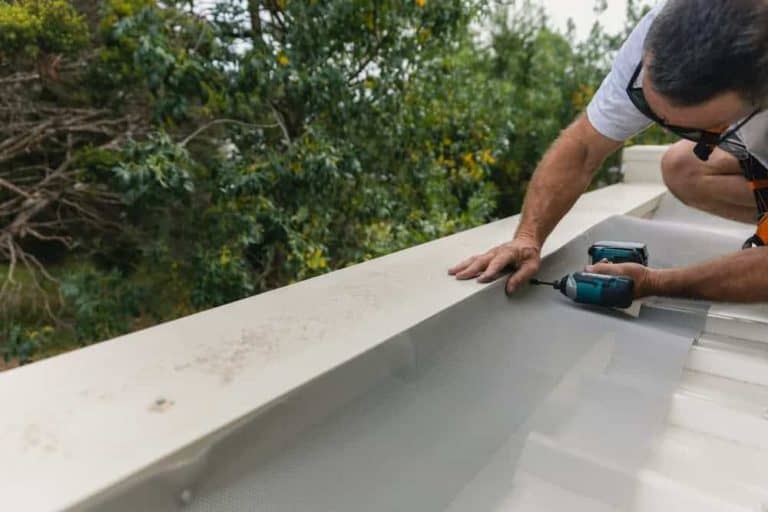
Box gutters suit a commercial-grade gutter guard more than 500mm wide.
A commercial gutter guard is suitable for a 750mm wide gap without sagging while maintaining its strength and durability over time.
Bull nose gutters
The bull nose gutter profile is typical in Australian heritage design, but the angle curve makes it unstable and visible from the ground for most other gutter guards.
An integrated mesh system is better suited to a bull nose gutter as it is less visible, more secure and spans across the roof and gutter profile.
Parapets
Most suitable for a commercial grade gutter guard, especially if the parapet spans more than 500mm wide.
A commercial gutter guard is suitable for a 750mm wide gap without sagging while maintaining its strength and durability over time.
Rain heads and downpipes
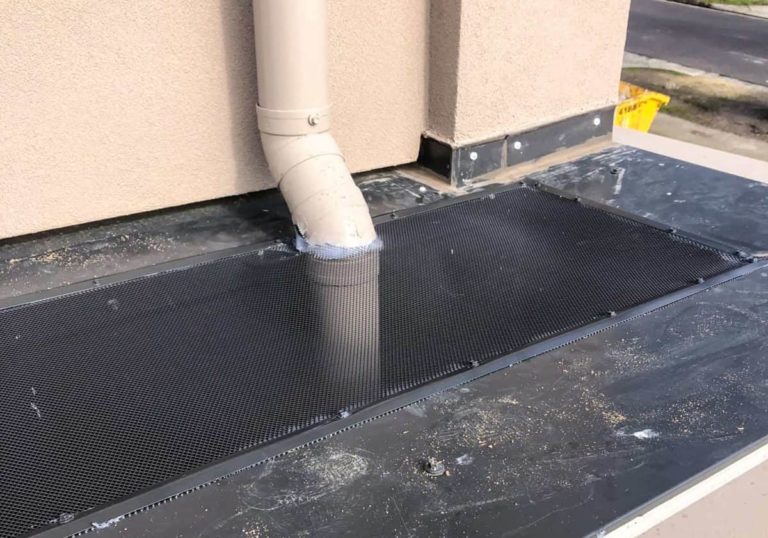
An integrated gutter guard is most suitable for rain heads and downpipe gutter protections because the mesh and fixtures can span across the gaps without sagging.
We recommend getting advice from professional installers for these areas.
Need gutter guard installed?
Gutter guard installation
The installation plays a significant factor in the type of gutter guard system you choose. All the gutter guards have DIY gutter guard options available; however, the vinyl guard and the integrated gutter guard is often considered best installed by a professional.
DIY Options

Avid DIYers will need an appropriate ladder and experience working at heights. As a safety precaution, any work done at heights should be completed in pairs with a roof spotter. The brush guard and foam inserts are the easiest to install. However, DIY sites supply integrated mesh systems and mesh panels in kits.
DIY gutter guards include:
- Integrated mesh system
- Valley mesh system
- Brush gutter guard
- Foam inserts
- Vinyl gutter guard
- Mesh panels and other mesh clip ons
The solar mesh should not be installed yourself, as it will void the panel’s warranties. Likewise, commercial gutter guards require specialised bracing and should only be installed by a professional.
Some gutter guards, such as brush guards and foam inserts, are easy to install. Other gutter guard types, such as the integrated mesh system, are a little more complicated for a DIY installation. Speak to an installer to learn the difficulty of your home project.
Professional gutter guard installers
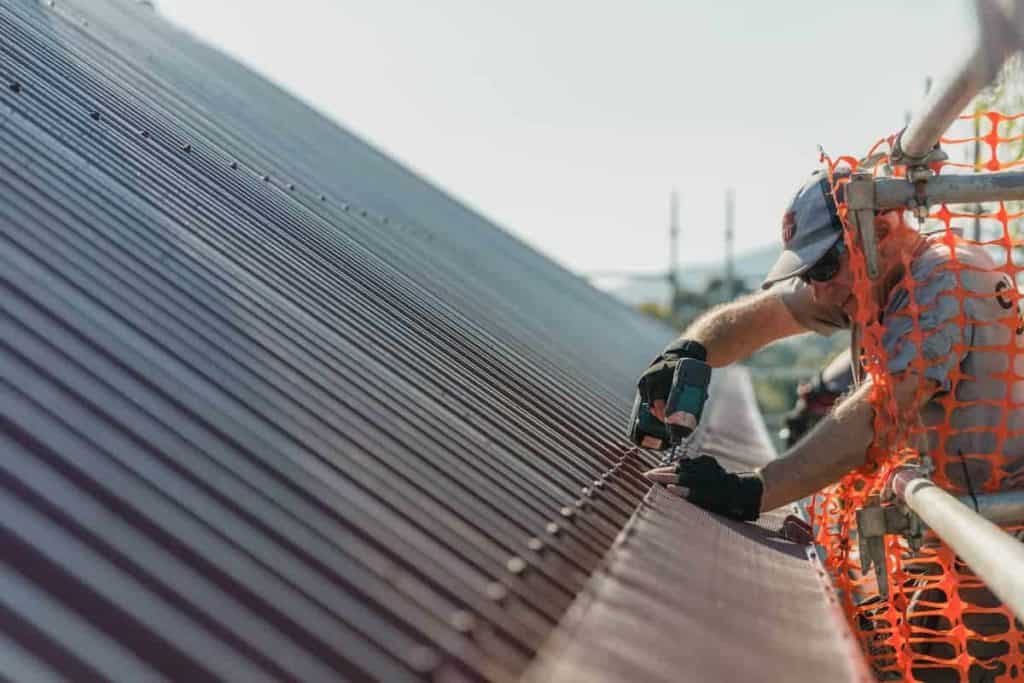
There are several options available for the professional installation of gutter guards, including:
- Accredited gutter guard installation companies
- Roofers
- Roofing plumbers
- Local Handymen
Single & Double Storey installations
ScreenTech recommends professional installers for double-storey houses or higher. Harnesses and scaffolding should be used where safety regulations require it.
Working at heights measures have changed in the last five years, making it more challenging to complete maintenance work at heights, including installing gutter guards. Many single-storey houses require scaffolding to compete in a gutter guard project, so always check the requirements from your local council or state.
Do not attempt to do a double-storey house without heights training.
Other important consideration
Now that you know about the different types of gutter guards consider the following factors before making a final purchasing decision.
Warranty
Most DIY gutter guards will not include a warranty because they’re a temporary solution. The integrated mesh system has the best warranty, 10-25 years.
Always be wary of gutter guards that claim more than a 25 -year warranty, as it is unlikely to have been tested on roofs that long.
Professionally installed guards should also come with a workmanship warranty or guarantee for the products of up to 20 years.
Professional gutter guard installers
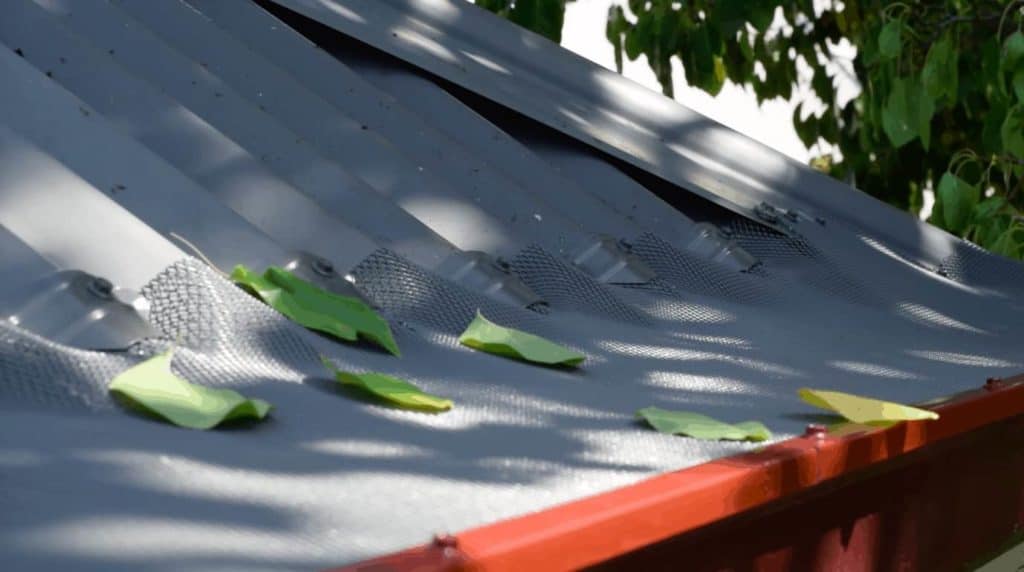
Your home’s curb appeal should be equally important to you, so choose guards that blend into your roof aesthetics or remain hidden from the ground. An integrated gutter guard includes powder-coated mesh that matches the roof and gutter Colorbond® or tile colours.
Also, remember that your roof and gutters may be different colours, so order trim, mesh and saddles to ensure they blend into the exterior.
Australian climates and environments
- Coastal areas: Plastic mesh is better suited to areas with high salt concentration and ensures it doesn’t rust quickly.
- Tropical climates: a more permanent solution, like an integrated mesh system, is better for an environment with
- Dry, dusty climates: Dry and dusty settings make gutter protection more challenging.
- Hail and extreme weather: Mesh panels and brush gutter guards can become airborne in wild winds and are considered dangerous.
Overall Best Gutter Protection– Integrated Mesh Gutter Guard
At ScreenTech, we firmly recommend an integrated mesh system as the most effective and durable gutter guard solution.
Integrated mesh guards can come in various materials, such as ScreenTech’s GutterMesh and TuffMesh® ranges, including aluminium, Colorbond® steel, and poly. Each range includes
ScreenTech’s TuffMesh® range is the best commercial-grade gutter guard in Australia. It is only available for professional installation and not as a DIY option.

